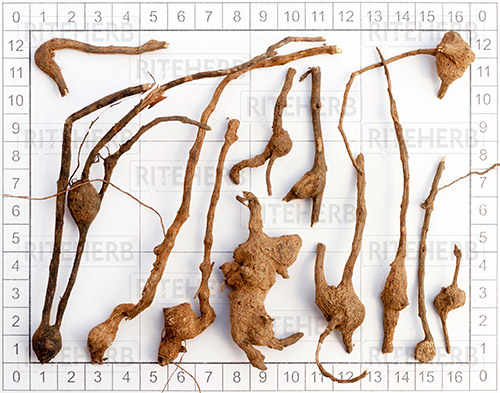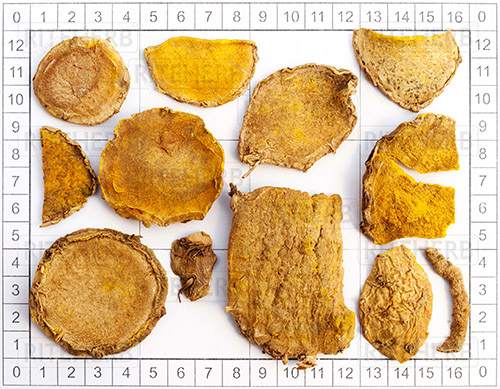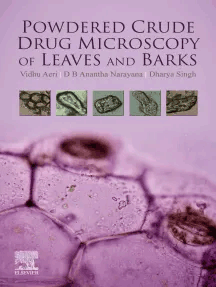ABOUT CAIPHAM TOOL
This tool is called Computer Assisted Identification for Powdered Herbal Materials Through Analytical Microscopy. The tool is based on high scientific basis of recognizing various features of powdered herbal materials when viewed under the microscope.
This validated tool has in the database listed out features, sub-features and, sub-sub- features.
Actual experiment-based data of Selected samples of authenticated powders of leaves, stems and stem barks, roots and rhizomes, seeds and fruits, flowers and whole plants (list attached) of identified medicinal plants are in the data base.
Standard Operating Procedure (SOP) for preparations of slides of the powdered herb (treated for clearance and with or without staining) has been provided on the site. provide the pdf for preparation of slides.
In the database, presence or absence of the features as determined under the microscope are indicated. Presence or absence of specific features is known to form the tool to identify specific herbs botanically as per Pharmacognostic science.

Tool features Steps to Use CAIPHAM
Registration/Payment
Users after obtaining necessary login ID and password followed by required payment can access to blank pages (template) of the required plant part: Leaves/ Stem & Stem Barks/ Roots & Rhizomes/ Seeds and fruits/Flowers/Whole Plants.
The information on the person/organization feeding the data is also entered. Data required are name of scientist uploading the data, name of the organization, date of analysis, sample batch number and email ID of the scientist.
SOP for preparation of slide and uploading the template
The samples will need to be prepared as per the SOP. The user is required to upload carefully the features present or absent in a sample of powdered herb after studying them under microscope in the respective templates. The tool will search and match with the identified botanical in the data base. The identification is limited to only those herbs whose data exist in the data bank.
Background

This data base has been developed by Professor Vidhu Aeri, Principal Investigator and her team under the project entitled ‘Development of IT Tool for identity of Crude Powdered Botanicals through Analytical Microscopy’ granted by DBT-BIRAC, Government of India, under PACE (AIR) Scheme in 2019. The project scope was to develop an IT Tool based on generated database of listed medicinal plants along with their adulterants and substitutes.
The meticulous scientific work was carried out at the Department of Pharmacognosy and Phytochemistry, School of Pharmaceutical Education & Research, JAMIA HAMDARD (A Government-Aided Deemed University), An Institution of Eminence (IoE) recommended by the Government of India, New Delhi - 110062, India.
The Tool at the pilot scale was developed by The Ayurvidye Trust who conceptualized the same and brief was finalized jointly between the Trust and Prof. Vidhu Aeri. A small pilot tool named TIPHAM ( www.tipham.com ) was developed and tested first with small number of samples/ limited features. Give reference of published papers with the pdf
After successful use, the current Tool with a greater number of samples was analysed, and comprehensive features resulted in CAIPHAM. CAIPHAM has been further upgraded with other plant parts and a greater number of medicinal plants. Caipham.com
The chief scientific officer Dr. DBA Narayana, Professor Vidhu Aeri and Dharya Singh contributed chapters and inputs through the publication of a book “Powdered Crude Drug Microscopy of leaves and barks, published by ELSEVIER” in 2020. The said book is the culmination of the actual experiment -based data of listed authenticated barks and leaves.

Powdered Crude Drug Microscopy of Leaves and Barks
Vidhu Aeri, Professor and Head, Department of Pharmacognosy and Phytochemistry, School of Pharmaceutical Education and Research, Jamia Hamdard, Hamdard Nagar, New Delhi, India;
D.B. Anantha Narayana, Chief Scientific Officer, Ayurvidye Trust, Bangalore, India and Dharya Singh, Department of Pharmacognosy and Phytochemistry, School of Pharmaceutical Education and Research, Jamia Hamdard, Hamdard Nagar, New Delhi, India